Wild Animals of Akan

■All photographs were taken in the Akan area.
Birds of Akan
The woods of Akan are a bird paradise. About 150 species of birds have been confirmed,
including black woodpecker, Steller's sea eagle, and Blakiston's fish owl.

Ural Owl
- Length
- approx. 33cm
A subspecies of owl that inhabits Hokkaido's forests.
It is whiter than other domestic species, and has brownish red vertical splotches. Nonmigratory.
Creatures of the Sky
-
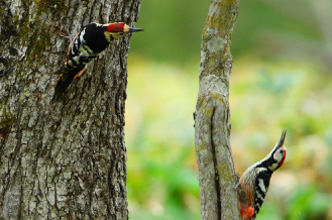
Ezo White-backed Woodpecker
- Length
- approx. 28cm
Subspecies of White-backed woodpecker inhabiting Hokkaido
-
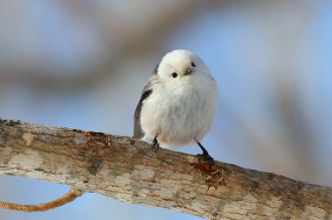
Striped Long-tailed Tit
- Length
- approx. 13-14cm
Subspecies of long-tailed tit inhabiting Hokkaido.
Called the "Snow Fairy" for it's white, cute appearance. Nonmigratory. -
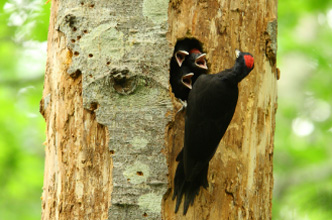
Black Woodpecker
- Length
- approx. 46cm
Japan's largest woodpecker and a natural monument.
-
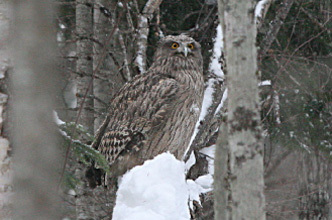
Blakiston's Fish Owl
- Length
- approx. 70cm
- Wing span
- approx. 180cm
Ainu Name: Kotankor Kamuy (Meaning spirit that protects the village) Japan's largest species of Owl.
In Japan, inhabits only Hokkaido. An IUCN Threatened species. -
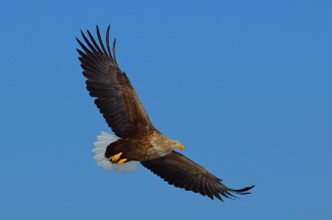
White Tailed Eagle
- Length
- approx. 83-94cm
- Wing span
- approx. 199-228cm
A winter or nonmigratory bird that spends winters on the sea cliffs, lakes, and rivers of Hokkaido.
Some also breed in the Doto or Dohoku areas. -
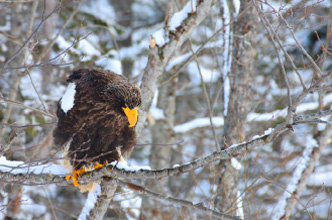
Steller's Sea Eagle
- Length
- approx. 88-102
- Wing span
- approx. 220-250cm
One of the world's largest eagles, and a natural monument.
An IUCN Vulnerable species. -
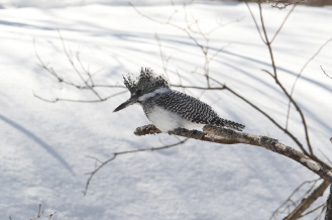
Yezo Crested Kingfisher
- Length
- approx. 38cm
A subspecies of kingfisher that lives around mountain areas and streams, and lakes.
Nonmigratory.
Wild Animals of Akan
The forests and plains of the Akan Caldera are home to 9 families and 24 species of mammal,
including brown bears, Yezo sika deer, Yezo squirrels, and flying squirrels.

Yezo Sika Deer
- Length
- Male approx. 90-190cm Female approx. 90-150cm
The most popular wild animal in Akan. Among the largest of Japan's sika deer. Spends its days in the woods. Comes out to forage for food at night.
Creatures of the Land
-
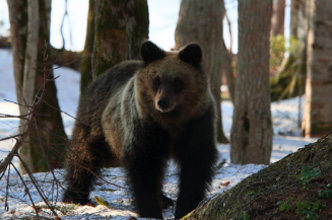
Brown Bear
- Length
- Male approx. 250-300cm Female 180~250cm
The largest land animal in Japan.
Mostly lives in forested areas, especially coniferous forests. -
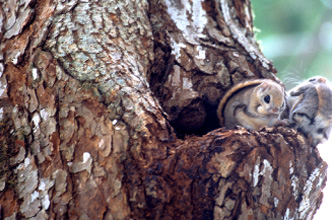
Siberian Flying Squirrel
- Length
- Male approx. 16cm-18cm Female approx. 15cm
A flying squirrel inhabiting Hokkaido. Glides using membranes.
Nocturnal -
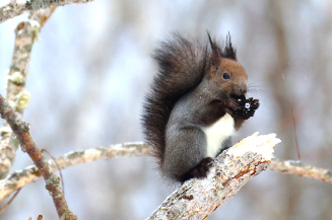
Yezo Squirrel
- Length
- approx. 20-27cm
A curious little squirrel that does not hibernate, but remains active all winter.
-
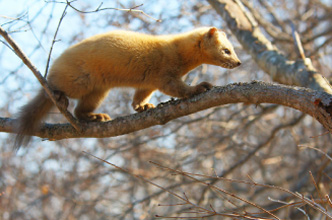
Japanese Sable
- Length
- approx. 40-50cm
A subspecies of sable inhabiting Hokkaido. It does not hibernate, and lives in forest areas or along marshes and rivers. Its body is extremely flexible and it is an excellent climber.
-
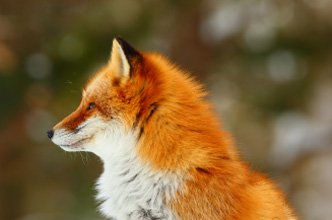
Ezo red fox
- Length
- approx. 60-80cm
The most commonly encountered animal in Hokkaido.
They are cute and often appear near towns, however they often have parasites so please avoid contact.
Fish and Water Life of Lake Akan
he huge water capacity of area forests means that clear, mineral-rich water flows readily through Akan.
12 local fish and 259 fresh-water algae species have been registered here,
including the purely native kokanee and native trout species,
as well as popular sport fish white-spotted char, and the special natural monument marimo algae.

Creatures of Lake Akan
-
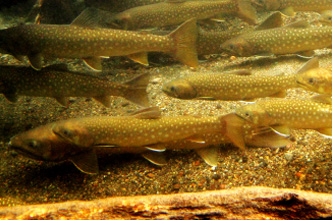
Lake Akan Native White-spotted Char
This beautiful gold-sparkling fish is a true Lake Akan-only sight. The so-called "golden white-spotted char", a huge draw for fishermen to Lake Akan, is of the genus salvelinus. Some larger ones go over 80cm long.
■Family Salmonidae/Genus Salvelinus
-
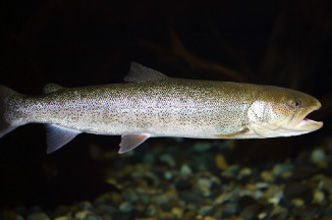
Japan's Largest Freshwater fish, The Sakhalin Taimen
This large freshwater fish can exceed 1 meter. Stocking has led to Lake Akan currently having a large population, but the explorer and namer of Hokkaido Takeshiro Matsuura mentions "Locals bringing Woheraibe (a type of Sakhalin taimen) over 4 shaku (1.4 meters) long" in his records.
■Family Salmonidae/Genus Parahucho
-
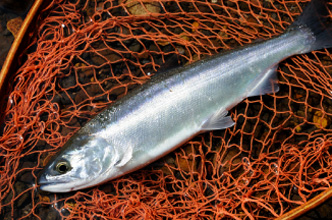
Lake Akan Native Kokanee
This is a landlocked variety of sockeye salmon native to Lake Akan, with a silver body and red, delicious meat. They're also known as Cippu in Hokkaido.
■Family Salmonidae/Genus Oncorhynchus
-
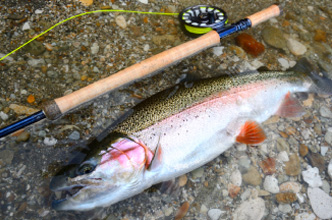
Rainbow Trout
Lake Akan's rainbow trout have a metallic silver body and beautifully shaped fins, and are a popular target for fishermen. They are an introduced species but have become a part of the lake's rich ecosystem.
■Family Salmonidae/Genus Oncorhynchus
-
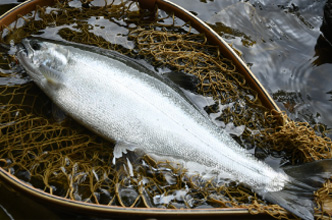
Masu Salmon
The masu salmon in Lake Akan are among the largest of all Hokkaido's lakes, with some of the silver-white fish reaching 40-50cm. In winter they're a popular ice-fishing target.
■Family Salmonidae/Genus Oncorhynchus
-
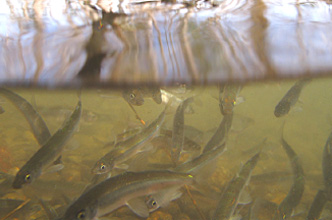
Pond Smelt
Lake Akan's smelt spend their whole lives in fresh water. Totally landlocked, adults grow to about 10cm.
They're a popular target of ice fishing in winter!■Family Osmeridae/Genus Hypomesus
-
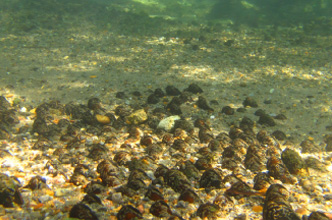
Freshwater Pearl Mussel
This northern freshwater mussel species lives in the Ibeshibetsu River flowing into Lake Akan from Panketo. As it can only live in clean water, it's testament to stream quality.
■Order Unionoida/Family Margaritiferidae
-
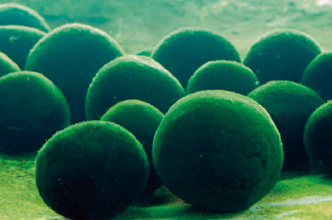
Marimo
This lovely ball-shaped freshwater moss forms a world-class sphere shape. The largest can reach 30cm in diameter. National Natural Monument.
■Family Pithophoraceae/Genus Aegagropila
Forest Plants of Akan
The woods of the Akan Caldera host a wide range of tree types,
from northern coniferous types like Yezo spruce and Sakhalin spruce to broadleaf trees like Mongolian oak,
painted maple and Japanese Judas tree.
There is a great diversity of plant life as species change with elevation and forest floor vegetation gives way to alpine flora,
with about 700 species all told.

Trees of Akan
-
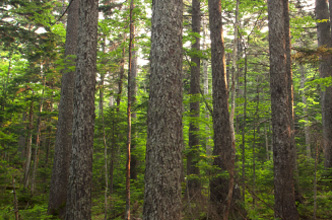
Sakhalin Spruce
This is Hokkaido's representative conifer, often making up full forests in the volcanic rock regions.
The Onneto east bank monoculture forest is famous in Akan.Conifer
-
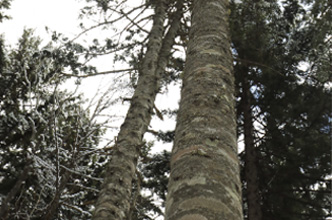
Sakhalin Fir
A kind of Japanese fir found in Hokkaido. If the Yezo spruce is considered a masculine tree, the Sakhalin fir is the more feminine. Can reach 25m tall.
Conifer
-
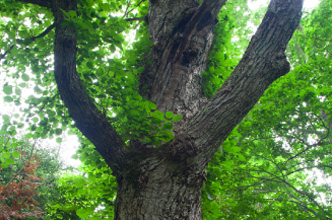
Mongolian Oak
This is one of the principal trees making up Akan's monoculture stands and mixed forests.
Some large specimens over 300 years old and 1m across can be found.Broadleaf
-
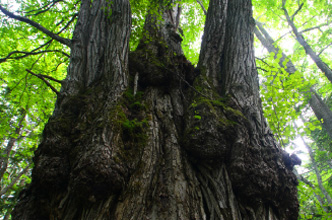
Japanese Judas Tree
Mixed in among Akan's broadleaf forests, some massive Japanese Judas trees are over 800 years old.
Broadleaf
-
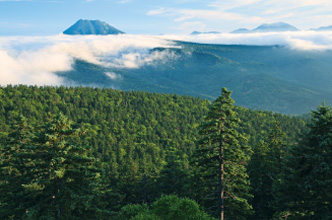
Yezo Spruce
These tall evergreens can reach 40m in height with 1m diameter trunks. They live mixed with broadleaf trees or Sakhalin firs.
Conifer
Flowering Plants of Akan
-
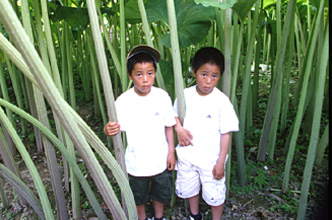
Rawanbuki
Japan’s largest fuki, reaching heights of 2-3m and stalk diameters of 10cm.
Grows in the basin of the Rawan River, Onneto’s headwater. -
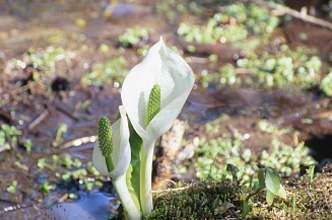
White Skunk Cabbage
These perennials blossom in great numbers in the spring forests of Akan. They also commonly grows along walkways.
Blossom Season: April-May
-
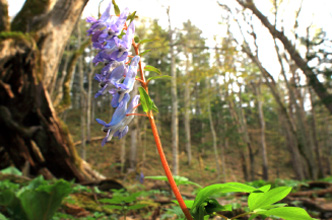
Corydalis Ambigua
This plant is a spring ephemeral, flowering and spreading rhizomes around when the broadleaf forests are budding. Often used in Chinese herbal medicine.
Blossom Season: May-June
-
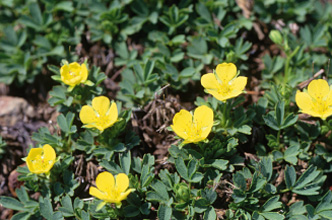
Meakankinbai
This perennial plant in the rose family was first gathered in 1897 on Mt. Meakan, hence the name.
Alpine Plant
Blossom Season: July-August
-
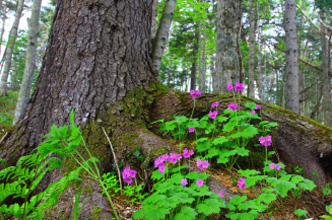
Primula Jesoana
One of Akan's primary flowers, growing in bunches in the trees around Lake Akan.
-
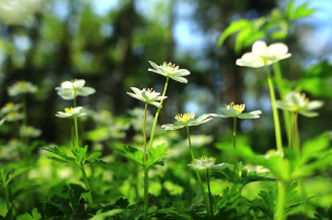
Soft Windflower
Grows on and around damp the forest floor. A spring ephemeral with lovely blossoms all through Akan's spring forests.
-
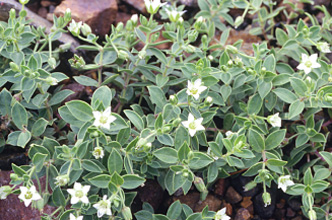
Meakanfusuma
This perennial in the carnation family grows only on Mt. Meakan and the Shiretoko Peninsula.
Blossom Season: June-August